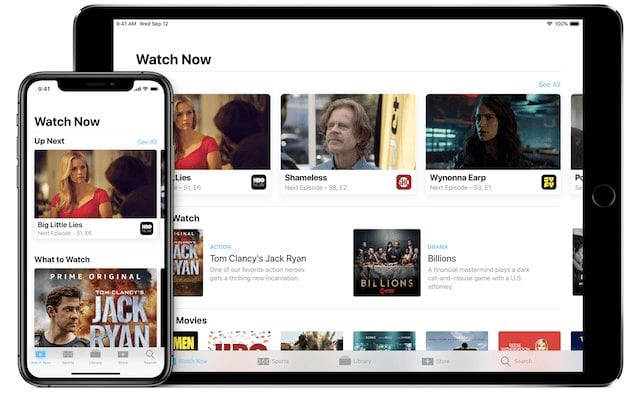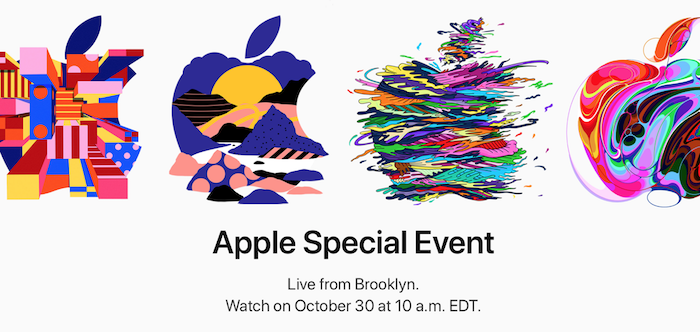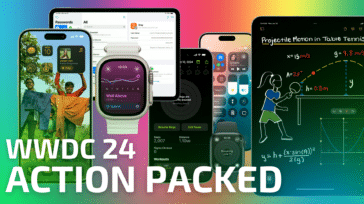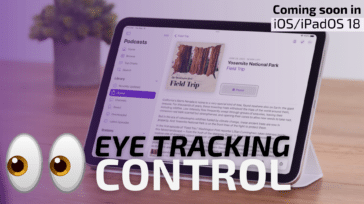
If there was ever a day Steve Jobs had an audience on the edge of their seats—and there were plenty of those days—it was January 9, 2007. Everyone crammed inside of San Francisco’s Moscone Center that morning wanted to see one thing: Apple’s much-rumored, much-anticipated entry into the mobile phone market.
The ubiquitous success of the iPod—introduced less than six years prior—had given Apple the internal confidence and external demand to push even further into the emerging mobile computing paradigm. Yes, smartphones were very much already a thing. Palm, Windows Mobile, Nokia, and Blackberry devices were not only out there, but beloved by professionals and enthusiasts.
But none of those devices had yet ingrained themselves into the daily lives of the general public. Not like the iPod had. In fact, all of those professionals pocketing smart phones, likely had an iPod tucked somewhere else as well. So, when the rumor mill spun up around the prospect of Apple putting a phone inside the iPod, it got a lot of folks excited.
And so, with the Moscone Center audience practically feeding from his hand at the prospect of finally seeing this iPod phone, Jobs threw them a curveball: The star of today’s event was not one device, but three.
“A widescreen iPod with Touch controls, a revolutionary mobile phone, and a breakthrough internet communications device,” Jobs teased. “An iPod. A phone. An internet communicator,” he repeated. “An iPod. A Phone… Are you getting it?” he asked to mounting cheers and applause. Then the master showman gave them all what they wanted.

“These are not three separate devices,” Jobs clarified as the applause grew. “And we are calling it iPhone. Today we are reinventing the phone.”
Jobs definitely knew how to slow reveal a device. Apple products have always been painstakingly designed and Jobs gave those products the introductions that the amount of work and thoughtfulness that went into them earned. A big part of that—and his overall success at the helm of Apple—was his ability to see the things that would really make an impact on the lives of regular people. Introducing the iPhone as not just one product, but three showed that Jobs clearly understood why the iPhone had such a good chance at making a major impact on the world.
Even so, Jobs couldn’t fully appreciate how this device would impact our daily lives, or for that matter, how the needs of its users would push for the rapid maturity of the iPhone as a platform.
The iPhone’s biggest feature is the one it shipped without
The biggest example of the latter is that the iPhone launched without an App Store. The apps that came on the phone—Phone, Calendar, Camera, Notes, Photos, Safari, etc.—were the only apps you had access to.
That’s because Apple initially placed a significant degree of importance on the version of mobile Safari that first shipped on the iPhone. Jobs dedicated a huge portion of the unveiling to showing how fully featured of a browser that it was—lingering on how the phone could load the full desktop version of the New York Times for example. Considering the long legacy of proud developers breathing life into the Mac as a platform (especially while that platform was on life support in the late 90s) through native apps, it’s odd to think that the initial opinion within Apple at the time of the iPhone’s introduction was that developers would create web apps that could be bookmarked within Safari and pinned to the home screen.
Of course that process of using web apps lacked the polish and focus that longtime Apple customers and Mac users expected from an Apple phone, and pressure began to mount for Apple to support native third party apps. A little more than a year following the iPhone’s launch, the App Store was born.
The App Store is the element of the iPhone—not the browser, or the iPod, or especially the phone—that has made the biggest impact on the world. (Plus, because its very presence actively sells phones, and the fact that Apple grabs a 30% cut of all app sales and subscriptions, it’s likely made the biggest impact on Apple’s bottom line too.)
However, while it’s true that Apple didn’t foresee the need or demand for the App Store, the foundation it was built upon was one of the features Jobs and Co. were most proud of when the first iPhone was released.
The iPhone redefined personal computing
In fact, before Jobs even got into the phone, iPod, and internet functionality of the original iPhone, he touted its “revolutionary UI.”
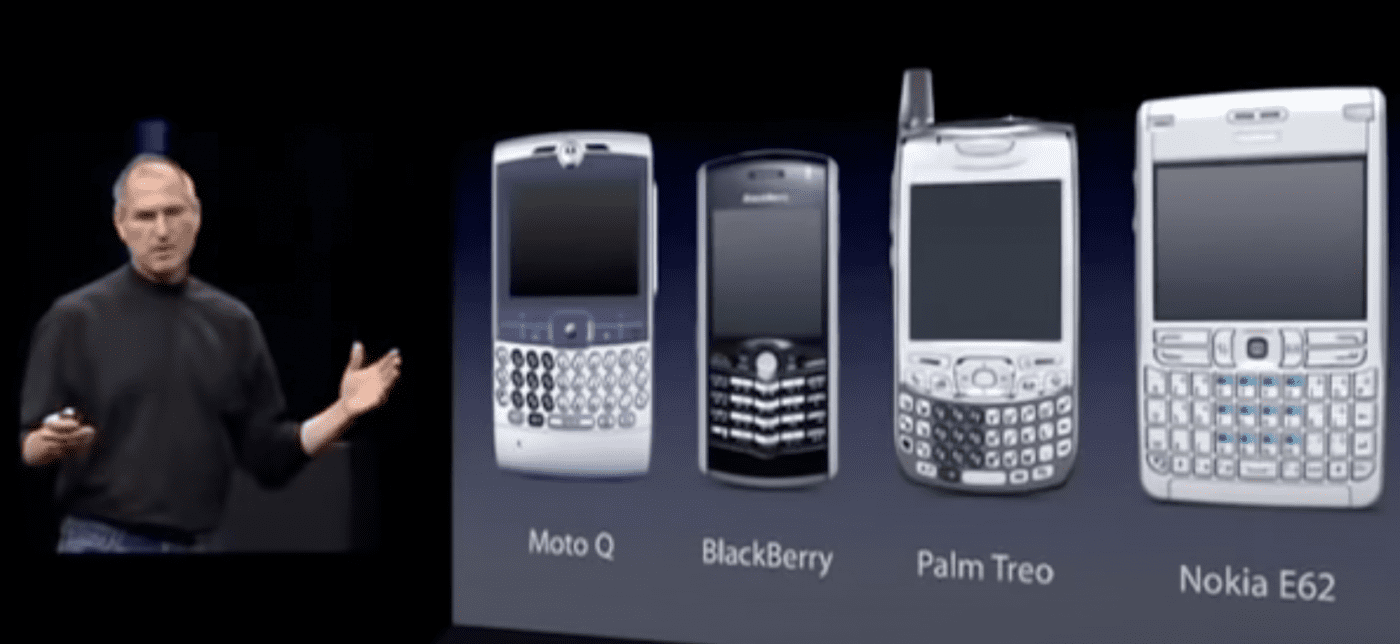
During the keynote, Jobs showed images of the current leading smartphones of the day, “the usual suspects,” as he referred to them. The Moto Q, a Blackberry, a Palm Treo, and the Nokia E62 made their brief appearance as Jobs began to explain with a furrowed brow why he was about to absolutely crush their businesses.
“They all have these keyboards that are there whether you need them or not to be there. And they all have these control buttons that are fixed in plastic, and are the same for every application,” he explained. “Well, every application wants a slightly different user interface. A slightly optimized set of buttons just for it.
“And what happens if you think of a great idea six months from now?” Jobs posited. “You cant turn around and add a button to these things—they’ve already shipped.”
What Jobs was describing was a concept that to this day sounds a bit futuristic even though it is now a common aspect of daily life. A device that can morph into multiple devices—unlimited devices. Hardware that could update as fluidly as software—and even without the need for physical media to be shipped to stores. A blank canvas for developers to create upon. No function or feature further away than a software update.
Hardware that disappears
Ever since its founding, Apple has sought to design hardware so approachable and thoughtful that the device itself becomes invisible to the software it supports and the function it is serving at any point in time. It’s why the Mac’s desktop and mouse support were such a huge leap forward for personal computing.
When it came time for the next leap forward, Apple placed this concept of a blank canvas at the heart of the iPhone’s design. And though other devices of the day had large-ish screens at their center, Apple removed the crutch of hardware buttons almost entirely and implemented a first-of-its-kind multi-touch display technology that instantly made the device more personal than any computer before it.
Thanks to this blank canvas approach, the work of developers, and the convenience of the App Store, we’ve long blown past the three initial tent posts that the original iPhone was built upon. With Apple’s desire to make devices that fade into the background, it’s exciting to think of how the company will implement new UI paradigms like augmented and virtual reality, and how future devices and platforms will continue to change not only the world but how we interact with it.
It’s hard to believe, but with devices like Apple’s Vision Pro headset nearing production, it likely won’t be another decade plus before we consider the iPhone, currently at the heart of our daily lives, a computing relic of the past.
